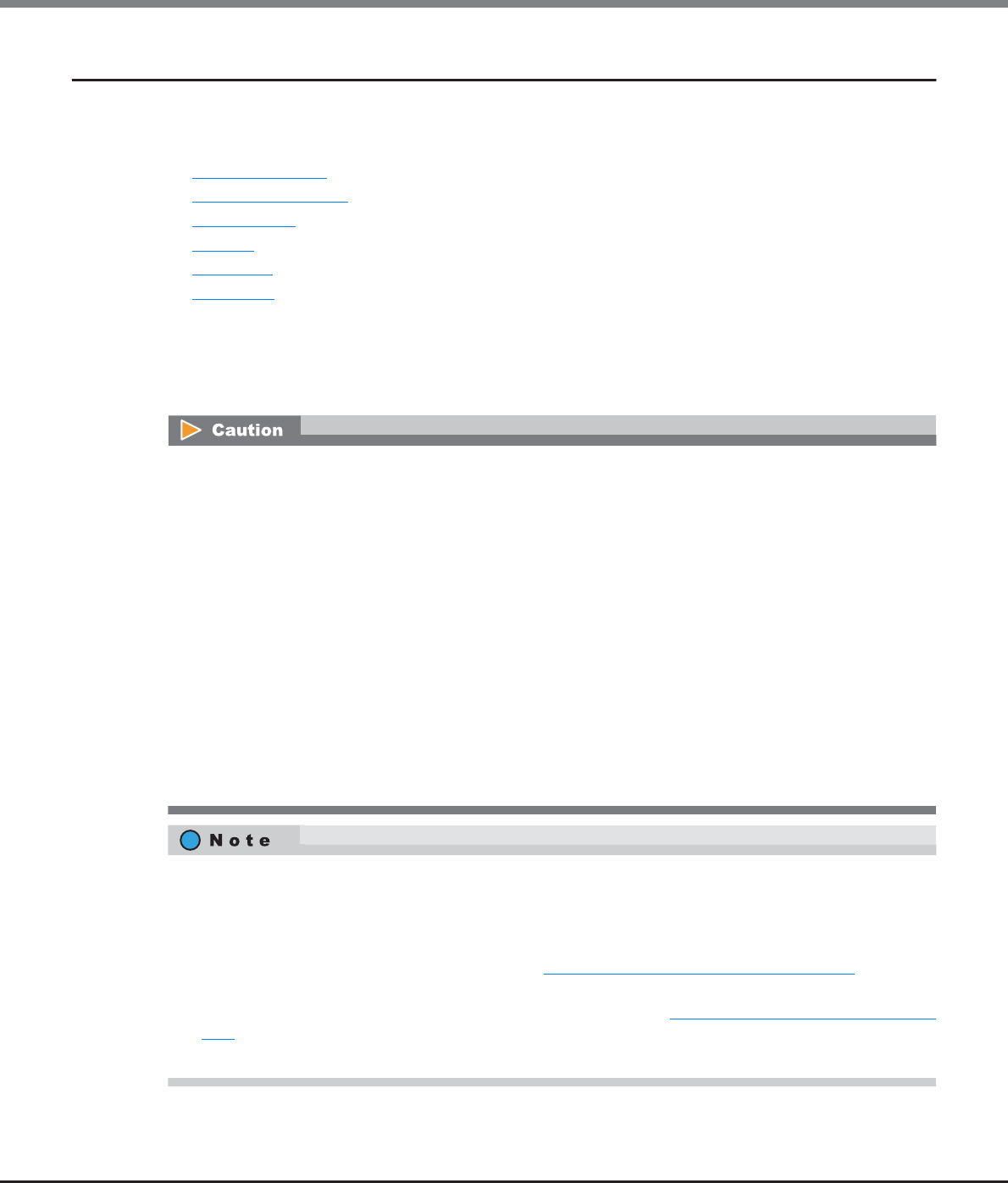
Chapter 11 System Management
11.2 Functions in the Action Area for System
ETERNUS Web GUI User’s Guide
Copyright 2013 FUJITSU LIMITED P2X0-1090-10ENZ0
853
11.2.7 Define Role
This section describes user management.
User management provides the following functions:
• Setup User Account
• Initialize User Account
• Modify RADIUS
• Add Role
• Delete Role
• Modify Role
11.2.7.1 Setup User Account
This function adds, edits, and deletes the user account.
• Up to 60 user accounts can be set.
• When using the SSH Client Key authentication, create a pair of the SSH client public key and the SSH
client secret key in advance, using the creation tool. One public key can be registered per user account.
When the [Setup User Account] function is executed, the public key is registered in the ETERNUS DX Disk
storage system.
• The following types (formats) of public keys can be used:
- RSA for SSH1 (OpenSSH)
- DSA for SSH2 (IETF)
- RSA for SSH1 (IETF)
The supported maximum encryption strength for the public key is 4096-bit.
• "User Name" for user accounts cannot be changed.
• The current user account (your account) can be changed or deleted. When deleting a user account, at
least one user account with administrator privileges (role of "Admin") added must remain. Changed or
deleted settings become available at the next login.
• The last user account with administrator privileges (role of "Admin") added cannot be deleted.
• For a user account, the following items can be changed: "New Password", "User Role", whether to enable
or disable "Account", and whether to register "SSH Public Key" or not.
• When a user account is deleted, the SSH client public key registered in the ETERNUS DX Disk storage
system is also deleted.
• To initialize a user account, use the procedure in "11.2.7.2 Initialize User Account" (page 860)
. When a
user account is initialized, the password for the default account can be initialized.
• To change the current user's (your) password, use the procedure in "11.2.1 Change User Password" (page
742).
• When RADIUS Authentication is used for login, the current user's (your) password cannot be changed.


















